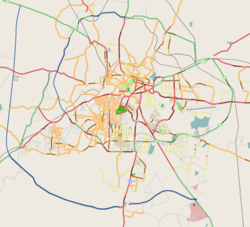Halasuru Ulsoor | |
|---|---|
neighbourhood | |
| Coordinates: 12°58′N77°38′E / 12.97°N 77.63°E | |
| Country | India |
| State | Karnataka |
| Metro | Bangalore |
| Languages | |
| • Official | Kannada |
| • Spoken | Kannada, Tamil, Telugu, Urdu, Hindi and English |
| Time zone | UTC+5:30 (IST) |
| PIN | 560008,560042 |
| Vehicle registration | KA-03 |
This article needs additional citations for verification .(June 2021) |




Halasuru, known as Ulsoor during the British Rule, is one of the oldest neighbourhoods in the city of Bengaluru. It is in central Bengaluru, and begins near the eastern terminus of Mahatma Gandhi Raste. It is renowned for its numerous temples and market.
